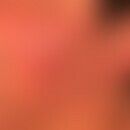Synonym(s)
DefinitionThis section has been translated automatically.
Atrophy of the skin in older people due to endogenous (intrinsic) and external (extrinsic) influences.
EtiopathogenesisThis section has been translated automatically.
Basically, the aging process of the skin can be divided into:
- intrinsic aging, the natural, physiological aging process, which begins after the 4th year as simple atrophy of all skin layers and is mainly influenced by genetic factors.
- extrinsic aging (UV damage to the skin/photoaging, smoking, alcohol, stress, other environmental toxins).
You might also be interested in
LocalizationThis section has been translated automatically.
The extrinsic aging process will be observed exclusively on the skin areas that are preferably exposed to sunlight (face; neck, nape of neck, décolleté, forearms, back of hands, lower legs).
Clinical featuresThis section has been translated automatically.
Yellowish or grayish-yellowish, but also piebald hyperpigmented due to chronic actinic influences, flabby, usually dry, withered, parchment-like skin, often interspersed with telangiectasias (especially on the face and thorax) and with marked prominence of the larger venous and arterial vessels lying under the skin (as in an anatomical specimen), with increased wrinkling and puckering. Subdivision of the skin into coarse rhombic fields. Often leucomelanodermic pigmentary shifts, decreased sebaceous and sweat gland activity with marked exsiccosis of the skin. Hair and nails change structurally as well as in their growth. Subcutaneous adipose tissue changes structurally, resulting in irregularities in the surface appearance of the skin/adipose tissue compartment.
The following changes are observed during senile involution of the skin, skin appendages, and subcutis:
- Decrease of skin turgor
- structural changes of subcutaneous adipose tissue with alteration of skin topography
- pruritus senilis (itching due to dryness of the integument)
- Exsiccation eczema
- Sebostasis (decrease in sebaceous gland function)
- Actinic elastosis (combination effect - intrinsic+extrinsic involution)
- Cutis-laxa syndrome
- Blepharochalasis
- Atrophy of the lip skin and the red of the lip
- Elastoidosis cutanea nodularis et cystica (severe circumscribed actinic elastosis with loss of skin elasticity and comedone formation)
- Cutis rhomboidalis nuchae (maximum reaction of the neck skin by intrinsic+extrinsic involution)
- Purpura senilis
- Lentigo solaris
- Poikiloderma due to hyper- and depigmentation as part of the extrinsic aging process.
- Growth retardation and structural changes of skin and hair
Differential diagnosisThis section has been translated automatically.
External therapyThis section has been translated automatically.
Incoming links (7)
Atrophy, flaccid; Atrophy, primary; Petechiae; Sahlischer venous corona; Skin atrophy, senile; Teleangiectasia; Teleangiectasia;Outgoing links (14)
Acrodermatitis chronica atrophicans; Actinic elastosis; Asteatotic dermatitis; Atrophy of the skin (overview); Blepharochalasis; Chemical peeling; Cutis rhomboidalis nuchae; Elastoidosis cutanea nodularis et cystica; Lentigo solaris; Poikiloderma, actinic; ... Show allDisclaimer
Please ask your physician for a reliable diagnosis. This website is only meant as a reference.









